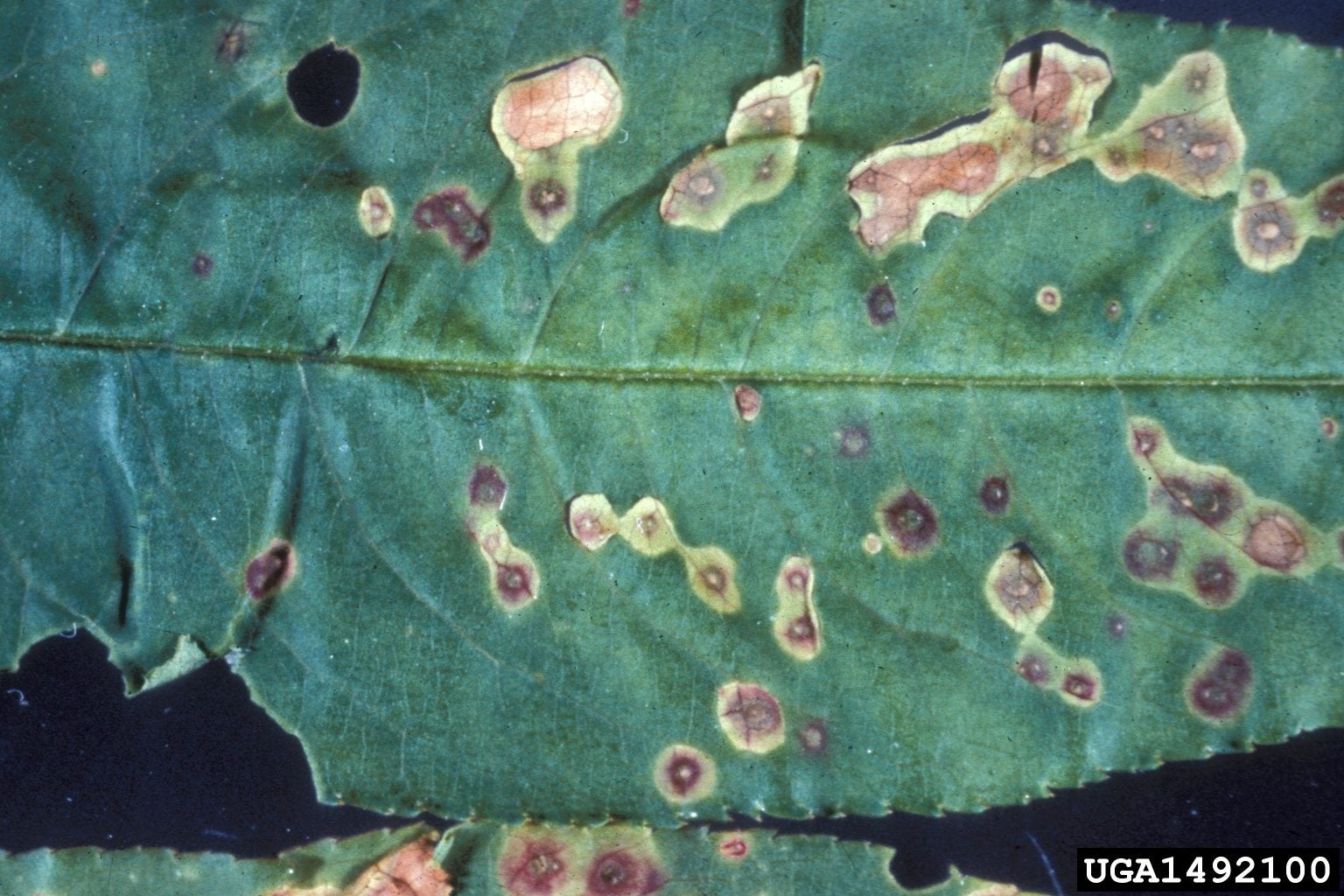Cherry Shot Hole Info: How To Manage Black Leaf Spot On Cherry Trees


Black leaf spot, also sometimes known as shot hole disease, is a problem that affects all stone fruit trees, including cherries. It isn’t as serious on cherries as it is on some other fruit trees, but it’s still best if it’s avoided. Keep reading to learn more about how to manage black leaf spot and shot hole disease on cherry trees.
What Causes Cherry Black Leaf Spot?
Cherry black leaf spot is a disease caused by the bacterium Xanthomonas arboricola var. pruni, also sometimes referred to as Xanthomonas pruni. It affects only stone fruits, and while it is most common on plums, nectarines, and peaches, it is also known to affect cherry trees.
Symptoms of Shot Hole Disease on Cherries
Cherry trees that fall victim to black leaf spot first exhibit symptoms as small, irregularly shaped spots of pale green or yellow on the undersides of leaves. These spots soon bleed through to the upper side and darken to brown, then black. Eventually, the diseased area falls out, earning the disease the name “shot hole.” There may still be a ring of affected tissue around the hole. Often, these spots cluster around the leaf tip. If the symptoms become severe, the whole leaf will drop from the tree. Stems may also develop cankers. If the tree becomes infected early in the growing season, fruit may develop in strange, distorted shapes.
Preventing Black Leaf Spot on Cherry Trees
Though the symptoms may sound bad, cherry shot hole is not a very serious disease. This is good news, because there does not yet exist an effective chemical or antibacterial control. The best method of prevention is to plant trees that are resistant to the bacterium. It’s also a good idea to keep your cherry trees well fertilized and watered, because a stressed tree is always more likely to succumb to a disease. Even if you do see signs of infection, however, it’s not the end of the world.
Gardening tips, videos, info and more delivered right to your inbox!
Sign up for the Gardening Know How newsletter today and receive a free copy of our e-book "How to Grow Delicious Tomatoes".

The only child of a horticulturist and an English teacher, Liz Baessler was destined to become a gardening editor. She has been with Gardening Know how since 2015, and a Senior Editor since 2020. She holds a BA in English from Brandeis University and an MA in English from the University of Geneva, Switzerland. After years of gardening in containers and community garden plots, she finally has a backyard of her own, which she is systematically filling with vegetables and flowers.
-
 8 Perfect Flowers To Plant With Tomatoes To Boost Yields & Banish Pests
8 Perfect Flowers To Plant With Tomatoes To Boost Yields & Banish PestsDon’t forget flowers when choosing companion plants for your tomato beds or pots. These pretty, fragrant blooms add beauty but are also highly beneficial.
By Mary Ellen Ellis
-
 Want The Longest Lasting Hydrangea Flowers? Grow These 8 Panicle Hydrangea Varieties
Want The Longest Lasting Hydrangea Flowers? Grow These 8 Panicle Hydrangea VarietiesFor ornamental shrubs that deliver the longest flowering seasons with plush blooms and delicate hues, these panicle hydrangea varieties are essential in your yard
By Tonya Barnett